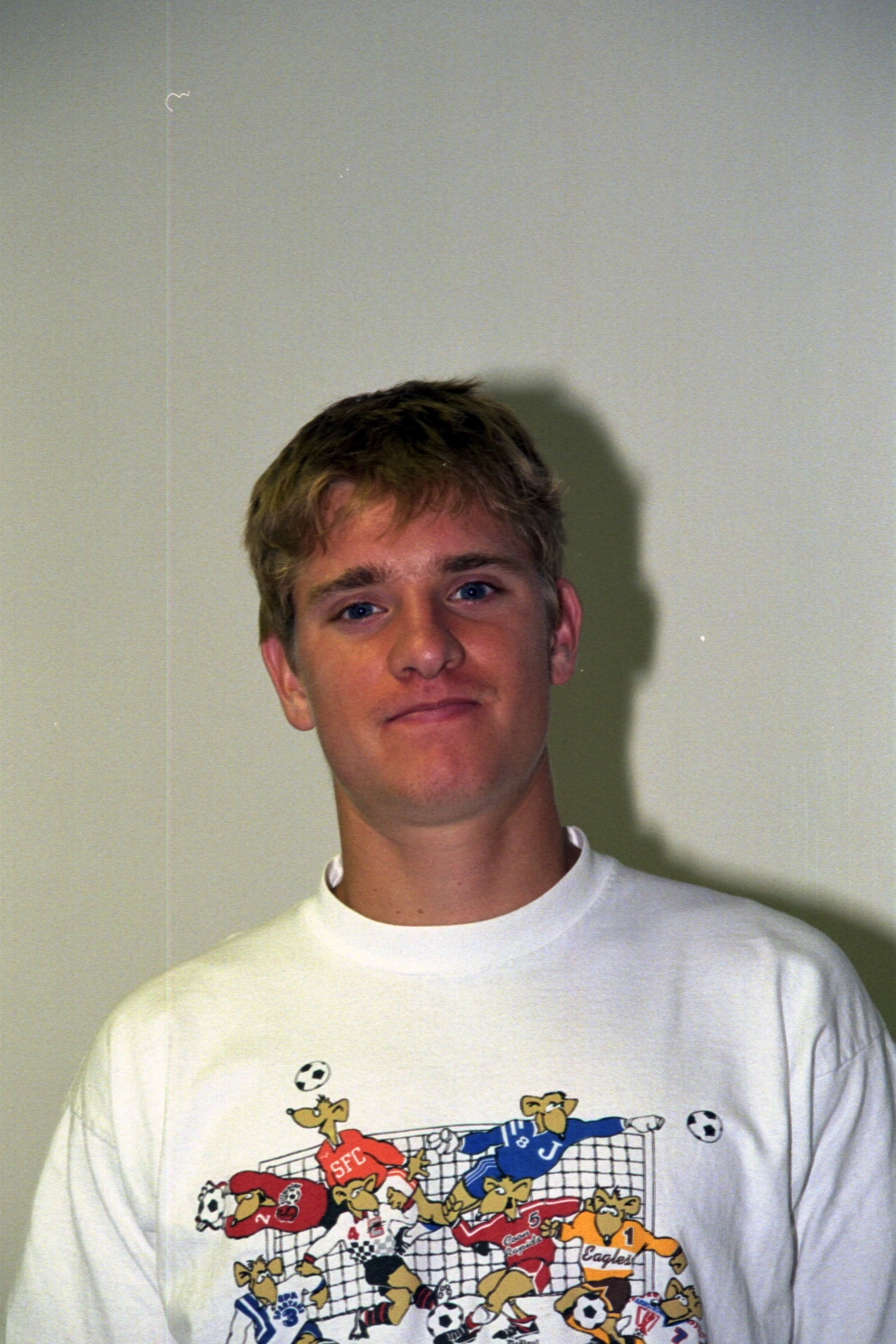
Home Institution: Carleton
Major/Minor:
MRSEC Mentor: Andreas Stein
Adsorption Experiments Using Macroporous Sieves
Hybrid inorganic –organic mesoporous molecular sieves will be applied to the adsorption of perfume chemicals and chlorinated pollutants in aqueous environments. UOFMN (unified organically functionalized mesoporous networks) and PMO (periodic mesoporous organosilicas) materials will be synthesized and tested in organic adsorption studies. These materials have a porous organosilcate framework in which Si atoms are bridged by ethane or ethylene groups. Like their pure inorganic analogues, such as MCM-41, they have uniform pore size and high surface area. The organic components of the hybrid frameworks make them better suited for adsorbing organic solvents than inorganic molecular sieves. Adsorption studies will be monitored using UV/visible spectroscopy and gas chromatography.
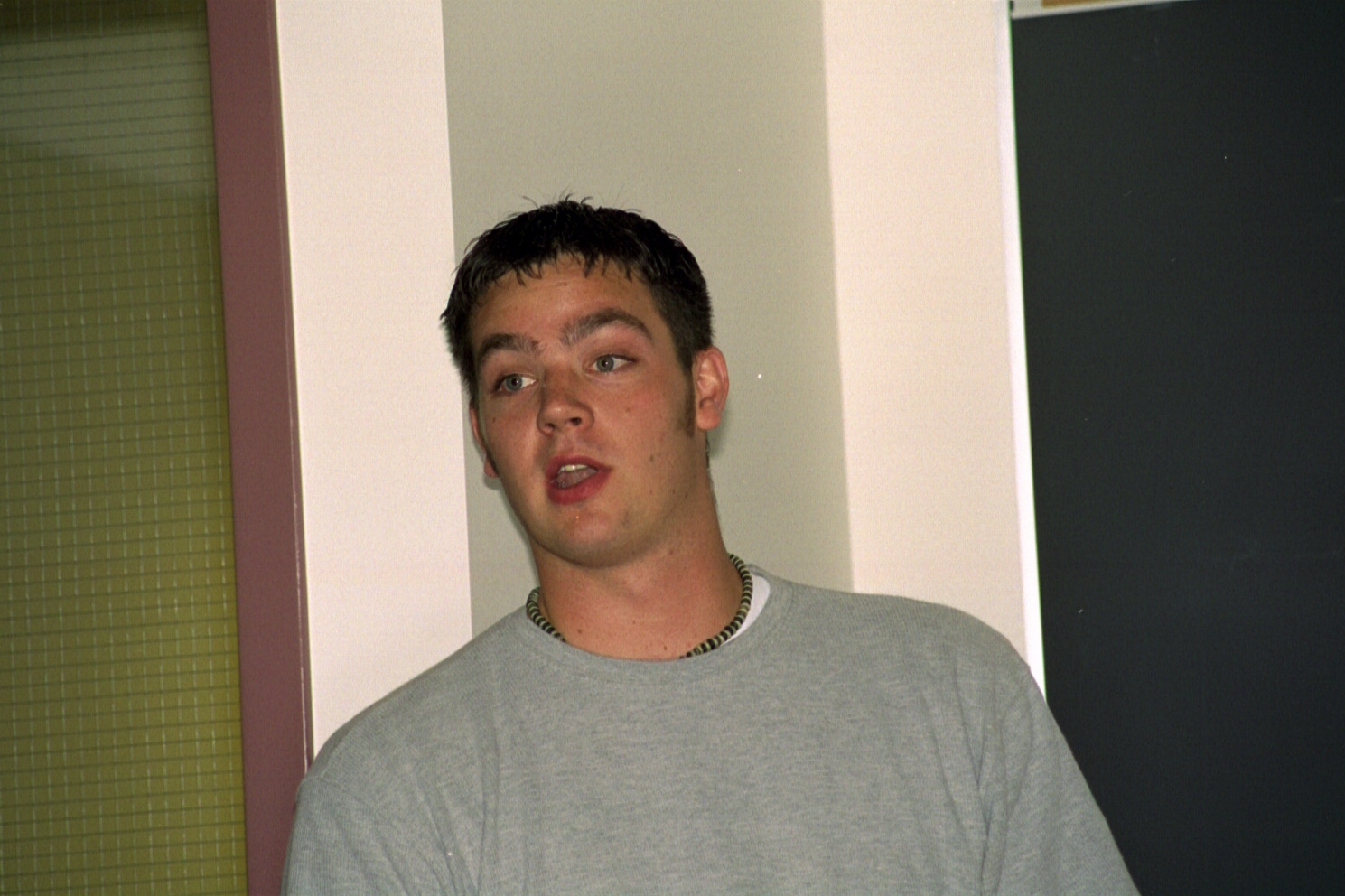
Home Institution: Gustavus Adolphus
Major/Minor:
MRSEC Mentor: Robert Tranquillo
Observation of Microstructural Alteration in Biological Tissues
Little is known about the relationship between macroscopic deformation and microstructure in soft biological tissues. Our research group has developed a relatively fast method for determining the orientation of collagen fibers in a stationary tissue sample using polarized light microscopy. The technique is currently being modified to allow for system portability and coordination with existing mechanical testing machines. Development is focused on using a PC to control image acquisition in coordination with quarter wave plate rotation, which changes the polarization of incident light on a biological tissue. Images will be acquired rapidly during mechanical testing and later processed to obtain collagen orientation. This new acquisition system will allow for characterization of the time-dependent microstructural alterations of stressed and unstressed tissues. The overall goal of this project is to correlate orientation of these fibers to the macroscopic load-displacement behavior of the tissue.
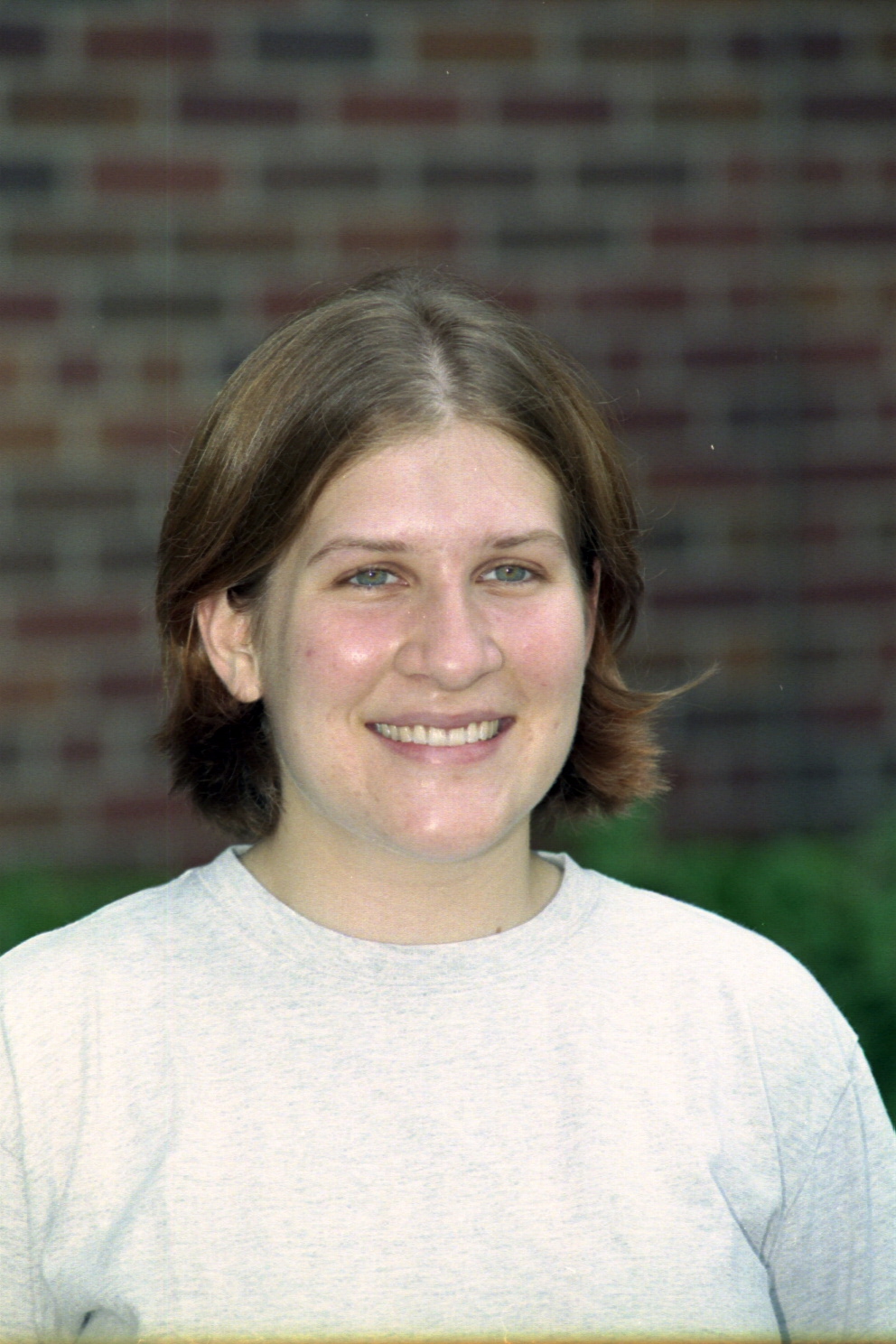
Home Institution: Gustavus Adolphus
Major/Minor:
MRSEC Mentor: Frank Bates
Modification of Epoxy Resins with Reactive Diblock Copolymers Synthesized through Nitroxide-Mediated Living Free Radical Polymerization
Reactive diblock copolymers have been used to modify epoxy resins. These copolymers form ordered microstructures when blended with epoxy precursors before cure, and the microstructures are retained after curing. Specifically we will synthesize these reactive diblock copolymers using nitroxide-mediated living free radical polymerization. One example of these copolymers is one in which the miscible block is a random copolymer of glycidyl methacrylate and methyl acrylate, while the immiscible block is made of isoprene. A variety of copolymers will be made with differing reactive monomer units. Eventually these copolymers will be made into blends with the epoxy precursors. The effects of the incorporation of these block copolymers on the epoxy composite physical properties will be studied.
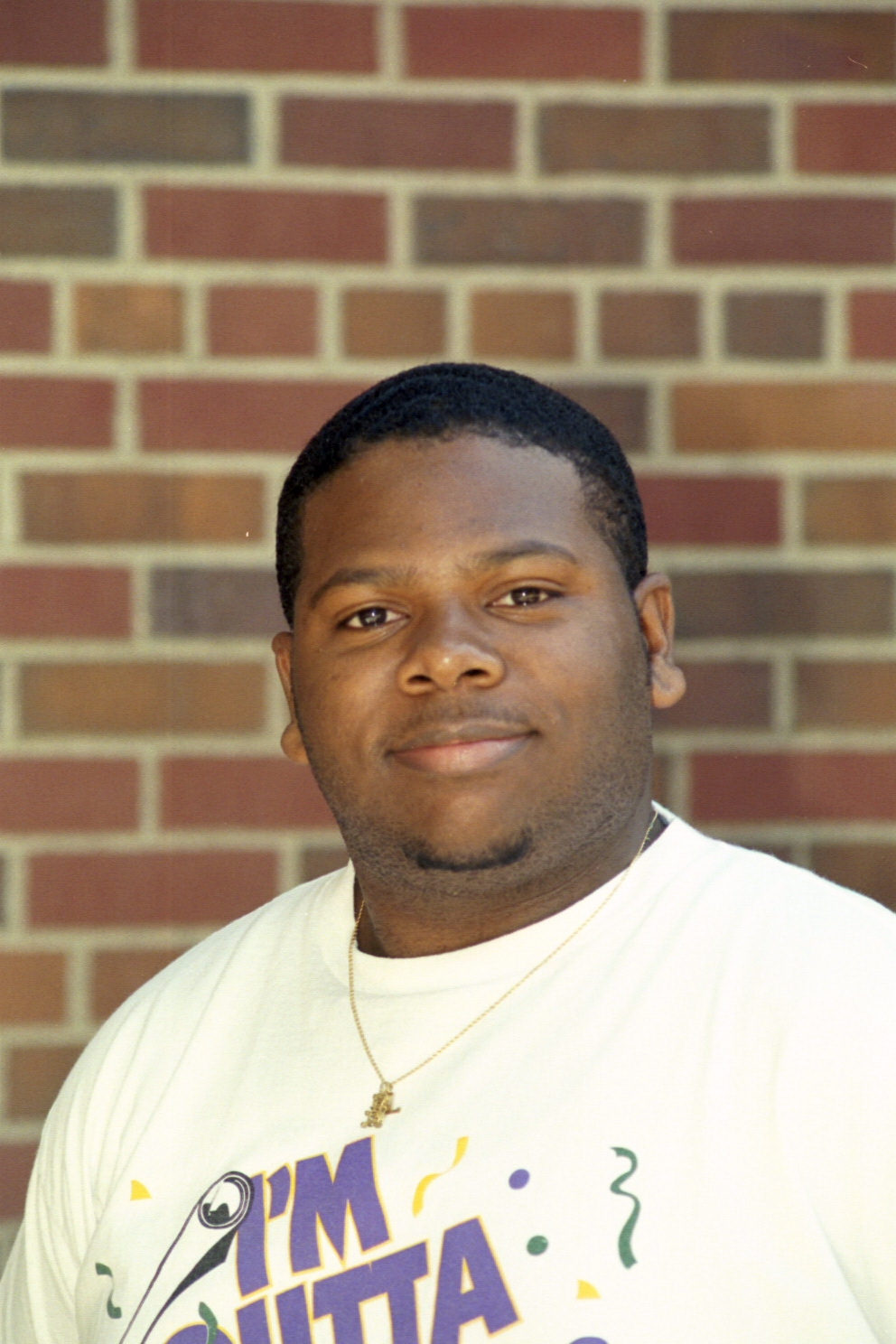
Home Institution: Alcorn State
Major/Minor:
MRSEC Mentor: Robert Tranquillo
Chemical Factors That Effect Cell Migration in Collagen and Fibrin Gels
The migration of rat dermal fibroblast in type I collagen and fibrin gels was assessed quantitatively in the presence of fibronectin and day 1 and 5 fluid. Using 3-D automated singlecell tracking, the movements of individual cells were recorded over a seventeen-hour period. The mean squared displacement (MSD) for a population of cells was calculated from this data and used in generalized least squares regression (GLSR) analysis to identify a random motility coefficient for the population of cells. Random motility coefficients were calculated for the cells in fibrin and collagen containing to 0, 10, 50, and 100 ug/ml of fibronectin, which is part of the gel, and exposed to 100, 150, and 200 ul/ml wound fluid in M199. Collagen gels treated with day 1 wound fluid had an increase in cell migration by a factor of 5. Day 5 wound fluid had an increased cell migration by a factor of 3. In Fibrin, day 1 wound fluid increased migration by 4. Day 5 wound fluid had little effect on fibroblast migration. Fibronectin in collagen increased significantly from 0% to 50% , but decreased in notably in 100%. Fibronectin in fibrin did similarly to collagen but had more of a decrease in 100% by dropping lower that the 0%.
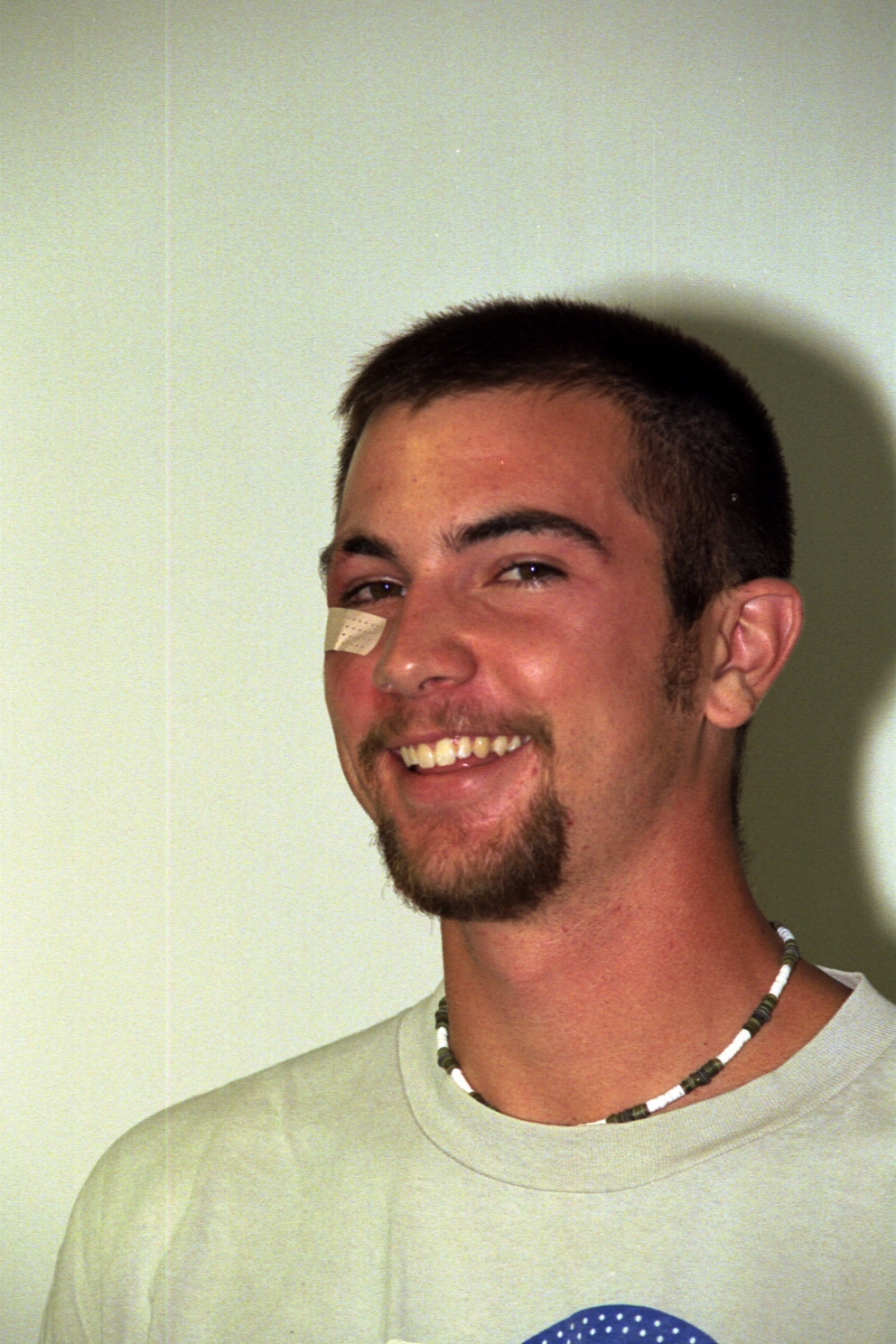
Home Institution: Gustavus Adolphus
Major/Minor:
MRSEC Mentor: Robert Cook
Mechanical Properties Determined by Macroindentation
Load and displacement measurement during indentation provides a method of calculating material properties such as modulus and hardness without direct observation of the contact impression. This method is useful for evaluation of mechanical properties especially for small-scale indentations where direct observation of the residual impression is difficult or impossible. In this work, previously developed “nanoindentation” techniques capable of deconvoluting load-displacement traces from an indentation have been extended to the macroscopic scale. Analysis at the macroscopic level will eliminate the “nano” problem of probe geometry calibration and allow for direct observation of contacts. After achieving accepted values of modulus and hardness of well-characterized bulk engineering materials such as aluminum, fused silica, soda lime glass, and sapphire, this technique will be extended to bulk viscoelastic materials and films, and eventually biomechanical materials.
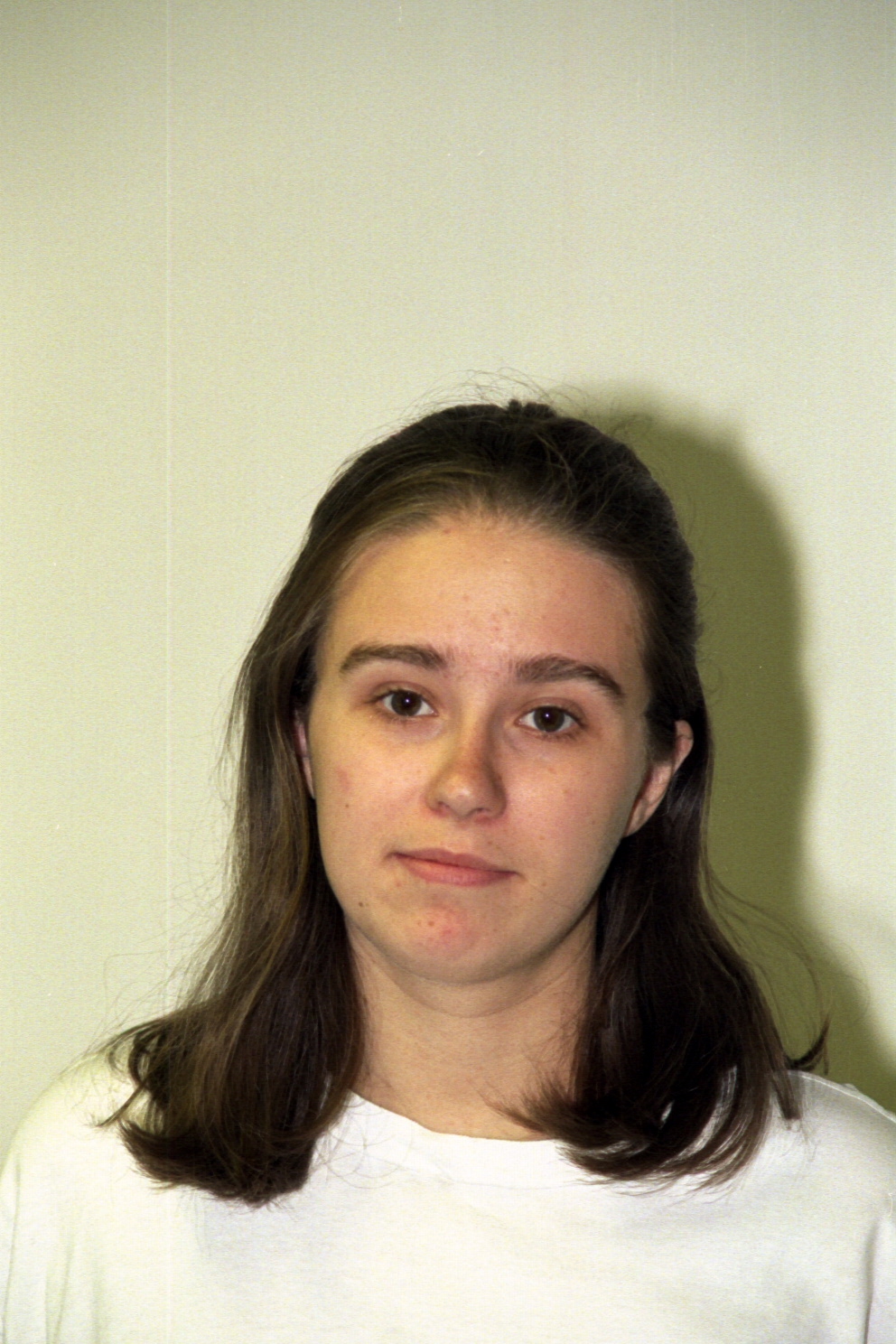
Home Institution: MIT
Major/Minor:
MRSEC Mentor: Tim Lodge
Anomalous Micellization in Polystyrene-Polyisoprene Diblock Copolymers
The purpose of these experiments is to further understand anomalous micellization in a polystyrene-polyisoprene diblock copolymer in solvents of varying selectivity. These systems will be analyzed in a temperature range of about 25 - 1500C using dynamic light scattering (DLS). The scattered intensity autocorrelation function yields ,information about the hydrodynamic radius (Rh). Preliminary experiments heating SI(8-7) in tetradecane reveal the expected behavior of anomalous micellization. At about 630C a sharp increase in scattered intensity was detected at all angles that peaked at 650C, the critical micellization temperature, and then decreased to a point consistent with the intensity plots of systems that do not show this spike. This corresponds approximately to a change in Rh from about 100 to over 1000 angstroms. Upon cooling the same system, the spike is not present. It is hypothesized that these results are due to small amounts of insoluble homopolymer affecting the micellization process. The exact mechanism of this process is unknown, though we hope to clarify it through several experiments. By varying the specificity of the solvent and adding known amounts of homopolymer, the role of the homopolymer in this behavior will be elucidated.
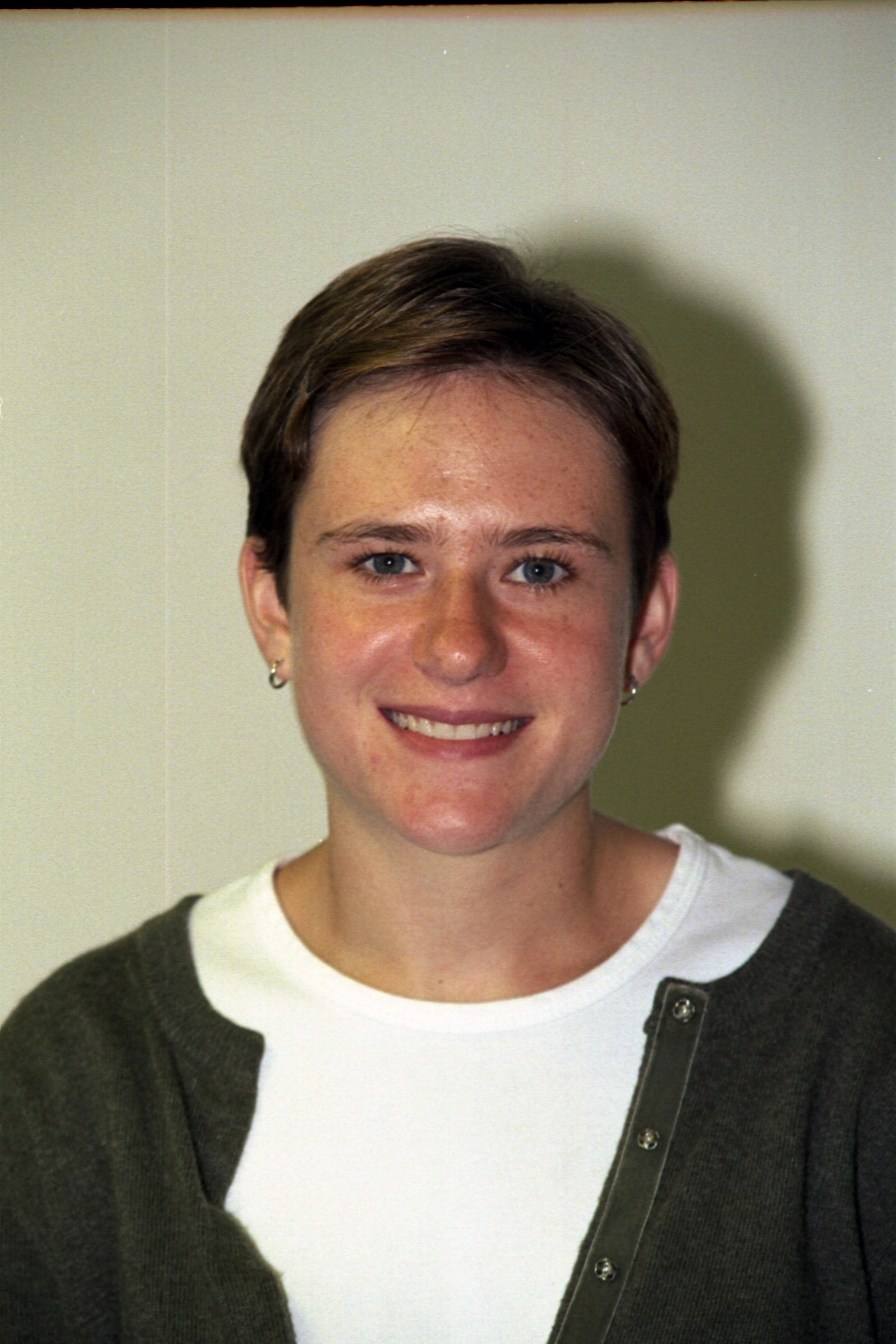
Home Institution: Hamline
Major/Minor:
MRSEC Mentor: Marc Hillmyer
Fluorination of Polymers by Free Radical Addition of Perfluoroalkyl Iodides
The focus of our research is the fluorination of polymers by free radical chemistry. The method implemented is the addition of perfluorohexyl iodide initiated by triethylborane to a variety of model polymers. We are mainly interested in the fluorination of polydienes because fluorinated polymers have properties including: low surface energies, high chemical and thermal stabilities, high solubilities in supercritical CO2, low refractive indices and dielectric constants. Our experiments thus far have been to understand the kinetics of the free radical addition reactions. Contrary to what was expected the trend we found is a decrease in the extent of reaction with an increase in the time the reaction runs. Future work will include verification of this trend and the addition of different amounts of perfluorohexyl iodides to achieve different extents of reactions.
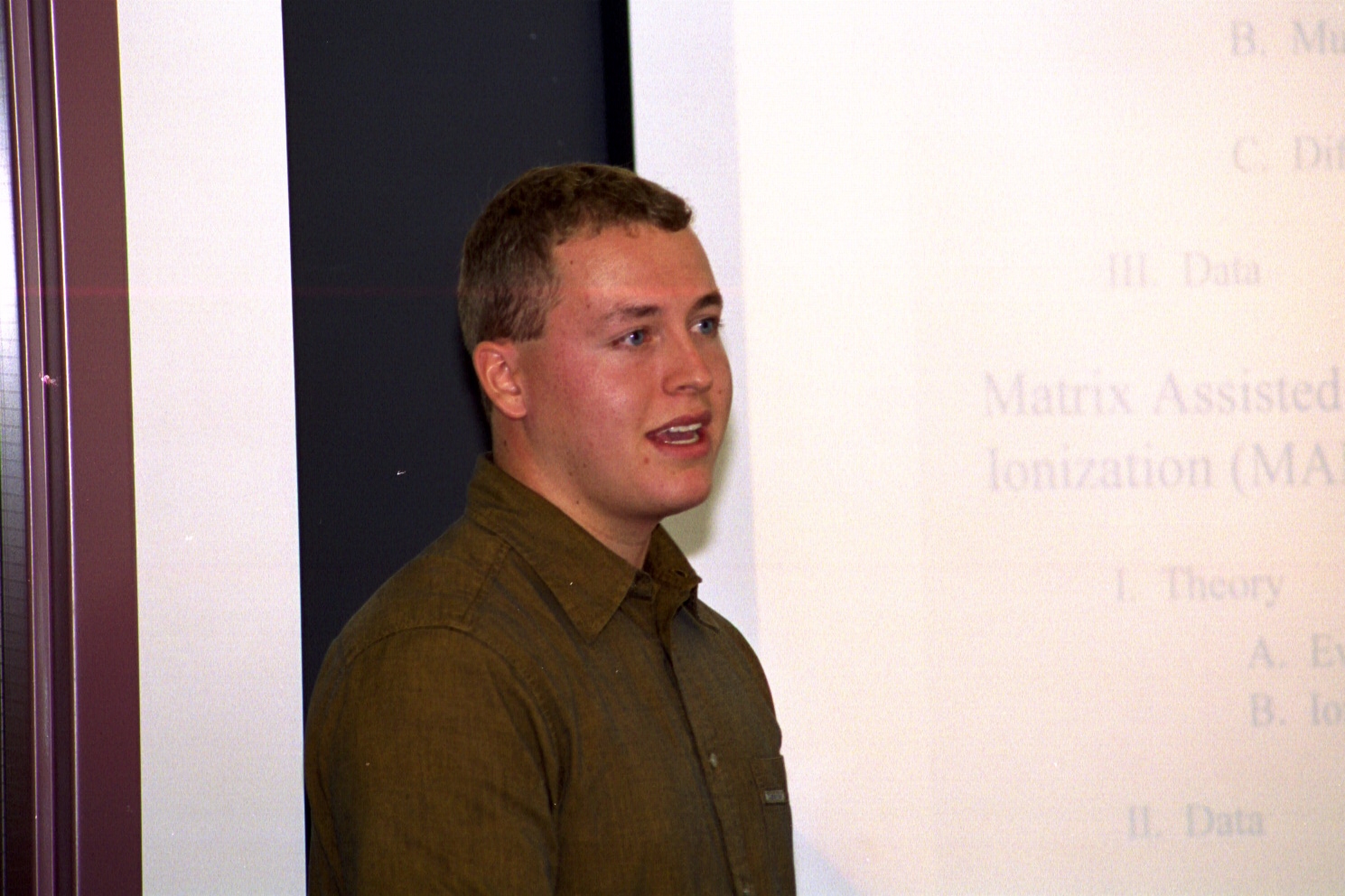
Home Institution: Cal Tech
Major/Minor:
MRSEC Mentor: Tim Lodge
Quantifying the relationship between MALDI and GPC
When using a matrix-assisted laser desorption ionization (MALDI) mass spectrometer to measure the molecular weight distribution (MWD) of a poly(styrene-b- isoprene) copolymer, a significant amount of homopolymer is present. The same poly(styrene-b-isoprene) run through gel permeation chromatography (GPC) shows in contrast that the homopolymer is present in only trace quantities, on the order of half a percent. The discrepancy may be related to differing abilities of the block copolymer and the homopolymer to be ionized in or evaporate from the matrix, and I propose to delineate the relationship between the relative amounts of homopolymer detected in MALDI and that calculated using GPC. The relationship probably depends on the MWD of the homopolymer, as well as to the volume fraction of polystyrene in the block copolymer. Tests using both MALDI and GPC will be run measuring the relative amounts of homopolymer in normal poly(styrene-b-isoprene) samples, as well as in samples that are spiked with varying levels of polystyrene homopolymer.
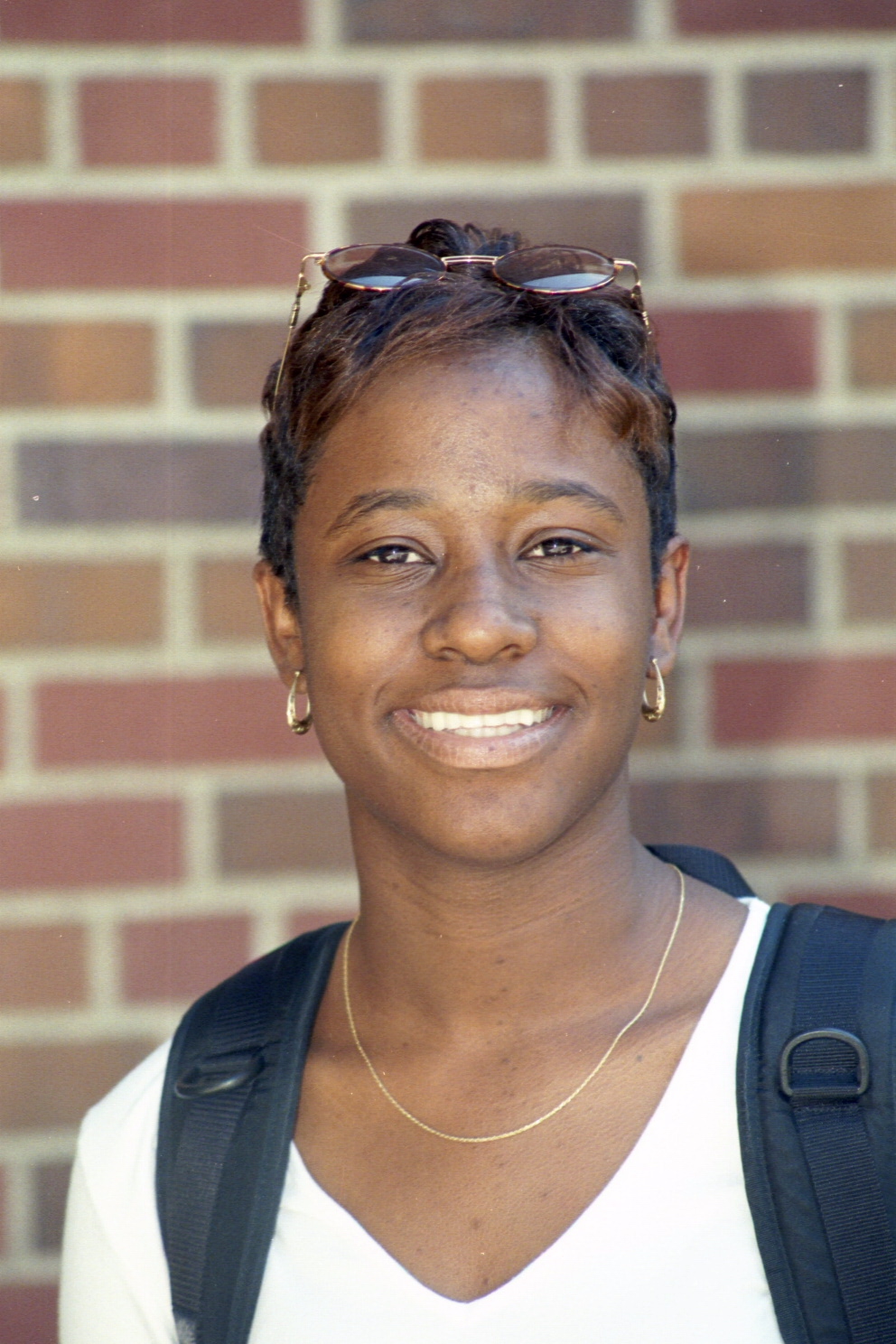
Home Institution: Xavier
Major/Minor:
MRSEC Mentor: Robert Tranquillo
Assessing the Effects of Ultraviolet Radiation on Bio-Artificial Arteries
Due to heart diseases like atherosclerosis, there are over 600,000 surgical procedures performed each year in the United States involving large of small blood vessels (Langer and Vacanti, 1993). Bio-artificial arteries (BAA) are being developed because of the lack of functional, available grafts of small diameter blood vessels. The BAA contains both smooth muscles cells and Type I bovine collagen. Ultraviolet radiation was chosen to enhance the mechanical properties of the BAA because it was found to be a rapid and effective way to cross-link collagen thus increasing the strength of the BAA. Smooth muscle cells in a collagen solution was exposed to UV for 5 min, 10 min, and 15 min. After a 3 week incubation period, the specimens were tested for cell viability, strength, and collagen formation. The cell viability tensile strength test shows the breaking force for all of the specimens are too small to be significant. Cross-linked collagen formation in all specimens is significantly low.
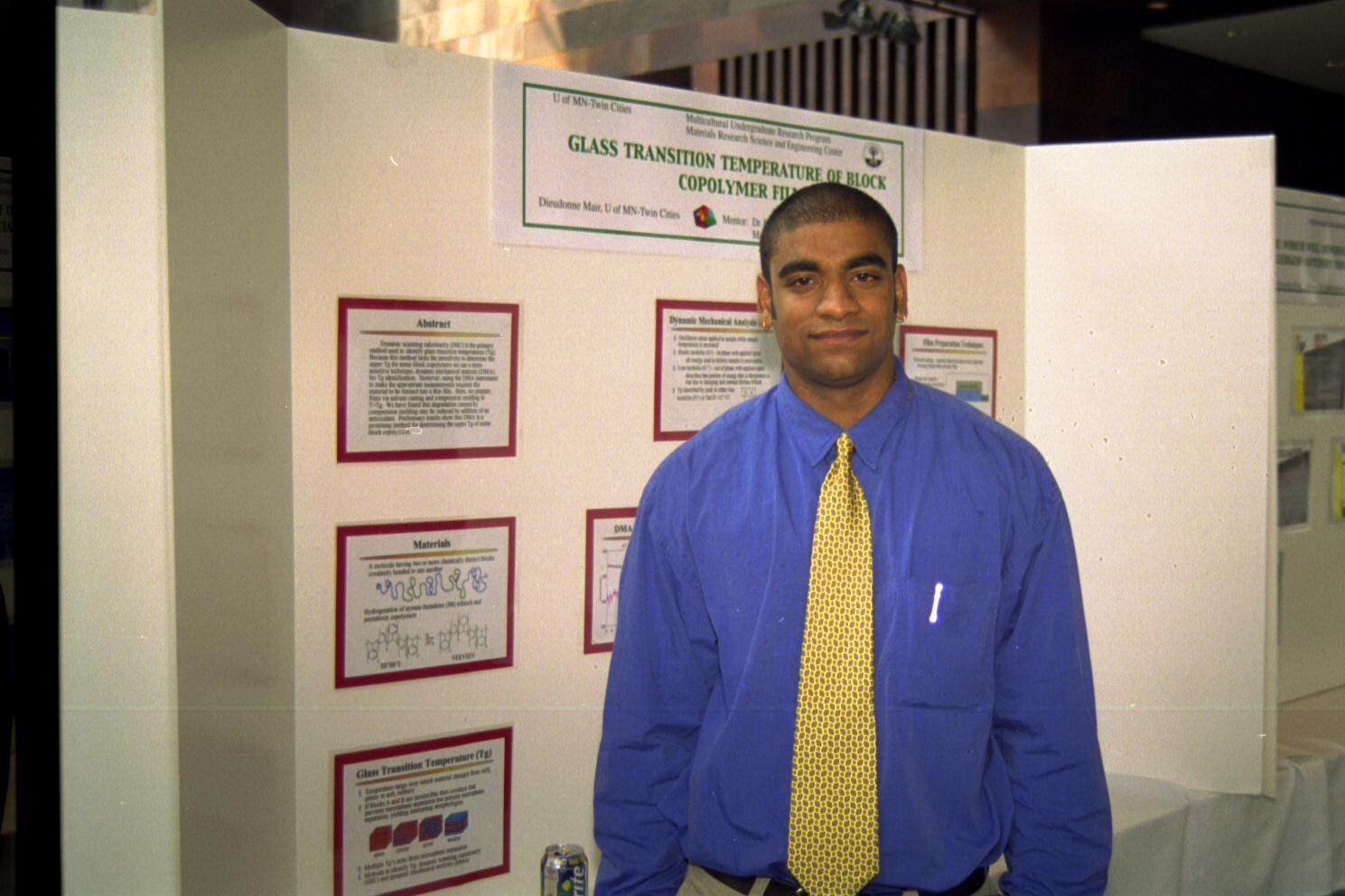
Home Institution: University of Minnesota
Major/Minor:
MRSEC Mentor: Frank Bates
Glass Transition Temperature of Block Copolymers Films
Dynamic scanning calorimetry (DSC) is the primary method to identify glass transition temperatures (tg). Because this method lacks the sensitivity to determine the upper Tg for some block copolymers we use a more sensitive technique, dynamic mechanical analysis (DMA), for Tg identification. However, using the DMA instrument to make the appropriate measurements requires the material to e formed into a thin film. Here, we prepare films via solvent casting and compression molding may be reduced by addition of an antioxidant. Preliminary results show that DMA is a promising method for determining the upper Tg of some block copolymers.
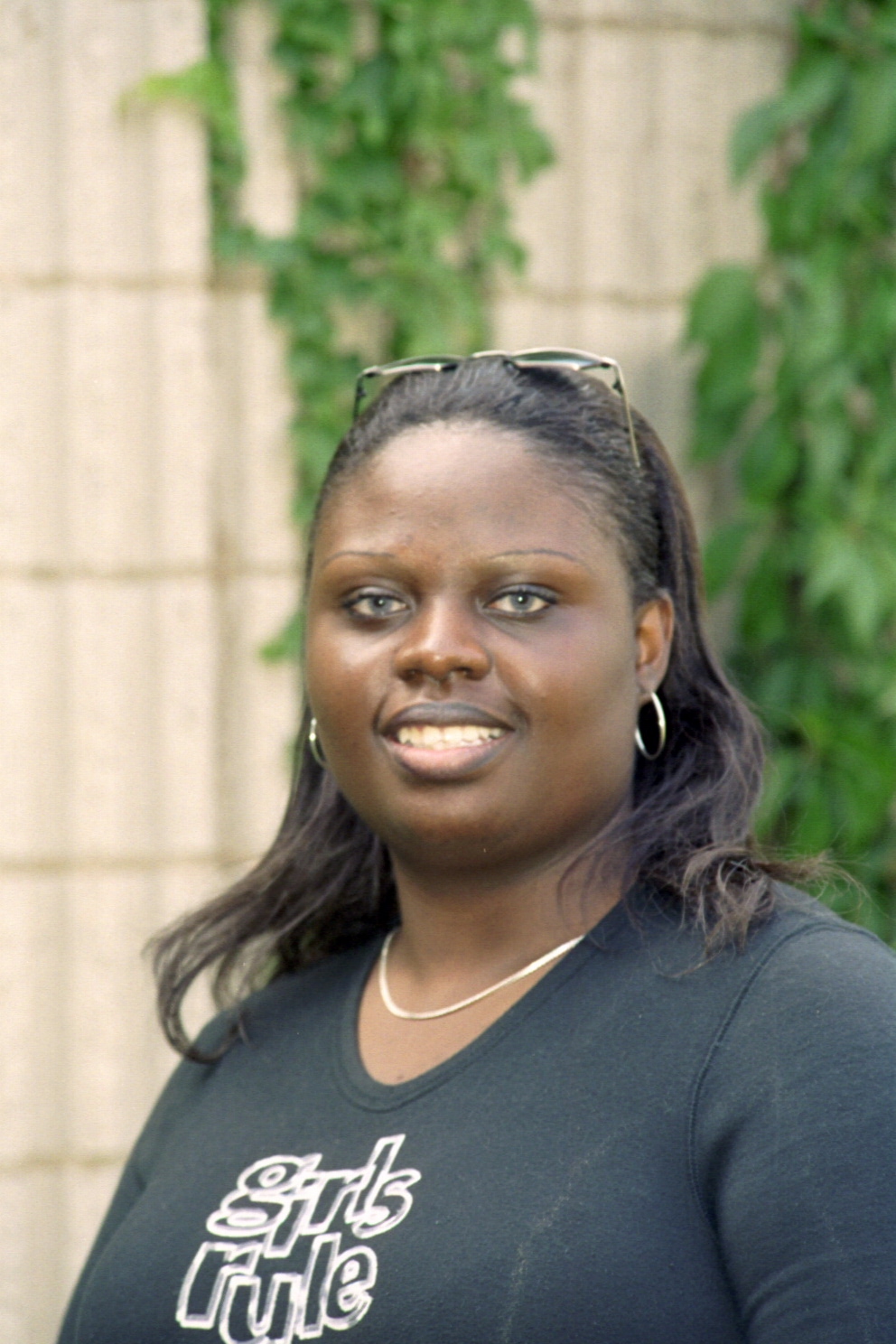
Home Institution: Lincoln University
Major/Minor:
MRSEC Mentor: Robert Tranquillo
The Influence of Extracellular Matrix on the Phenotype of Rat Adrenal Capsular Cells
To understand the mechanisms of adrenal regeneration, the influence of extracelluar matrix was observed on the phenotype and proliferation rate of cortical cells over an 8 day time period. Immunohistochemical staining was used on the cortical cells using the primary antibodies prolyl 4-Hydroxylase and 3 beta HSD and secondary antibodies DAM FITC and DAR Cy3 respectively. Cortical cells and human foreskin fibroblasts were also counted in a hemacytometer to observe any changes in cell number over a period of 7 days. Cortical fibroblast proliferation was not influenced by the ECM, however, the HFF's and cortical cells were influenced by the ECM over time, and demonstrated some phenotypic changes.
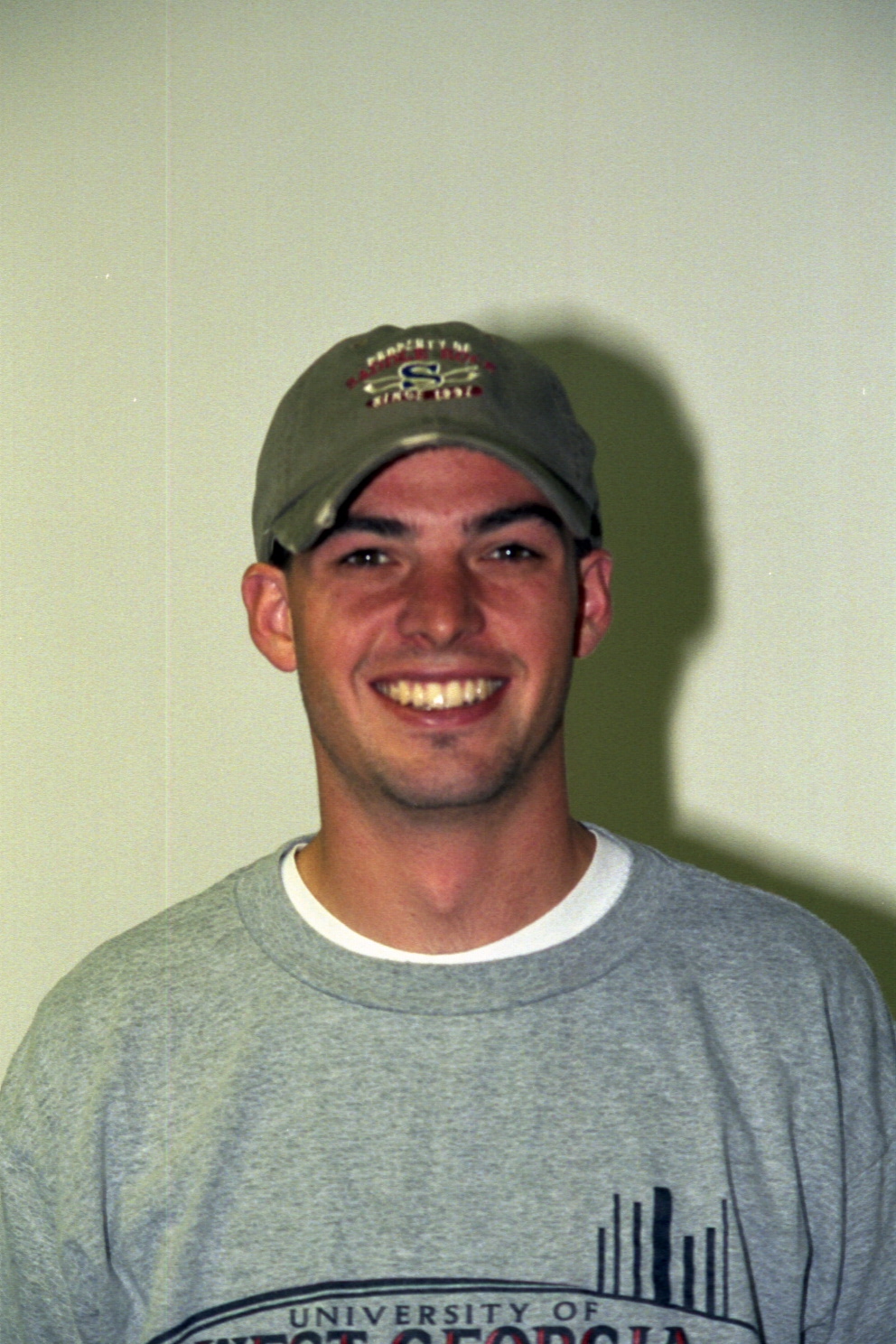
Home Institution: State University of West Georgia
Major/Minor:
MRSEC Mentor: Michael D. Ward
Synthesis and Evaluation of Crystalline Structures Employing Varying Alkane Disulfonates
The focal point of this project is to design organic crystalline structures with possible applications in nonlinear optics and separations. Specifically, we are constructing crystalline porous networks by using guanidinium ions and disulfonate ions that associate into a hydrogen-bonded complex, which house various guest molecules. This creates a defined three-dimensional quasi-hexagonal host framework that utilizes disulfonated alkane chains as pillars for the framework. Distinct puckering patterns in the guanidinium motif are observed. This pattern is dependant upon the inclusion of the guest molecules, realized by x-ray diffraction. Unique arrangement of guest molecules alter the size of the pores and severity of puckering caused by hydrogen bonding in the guanidinium sulfonate complex.
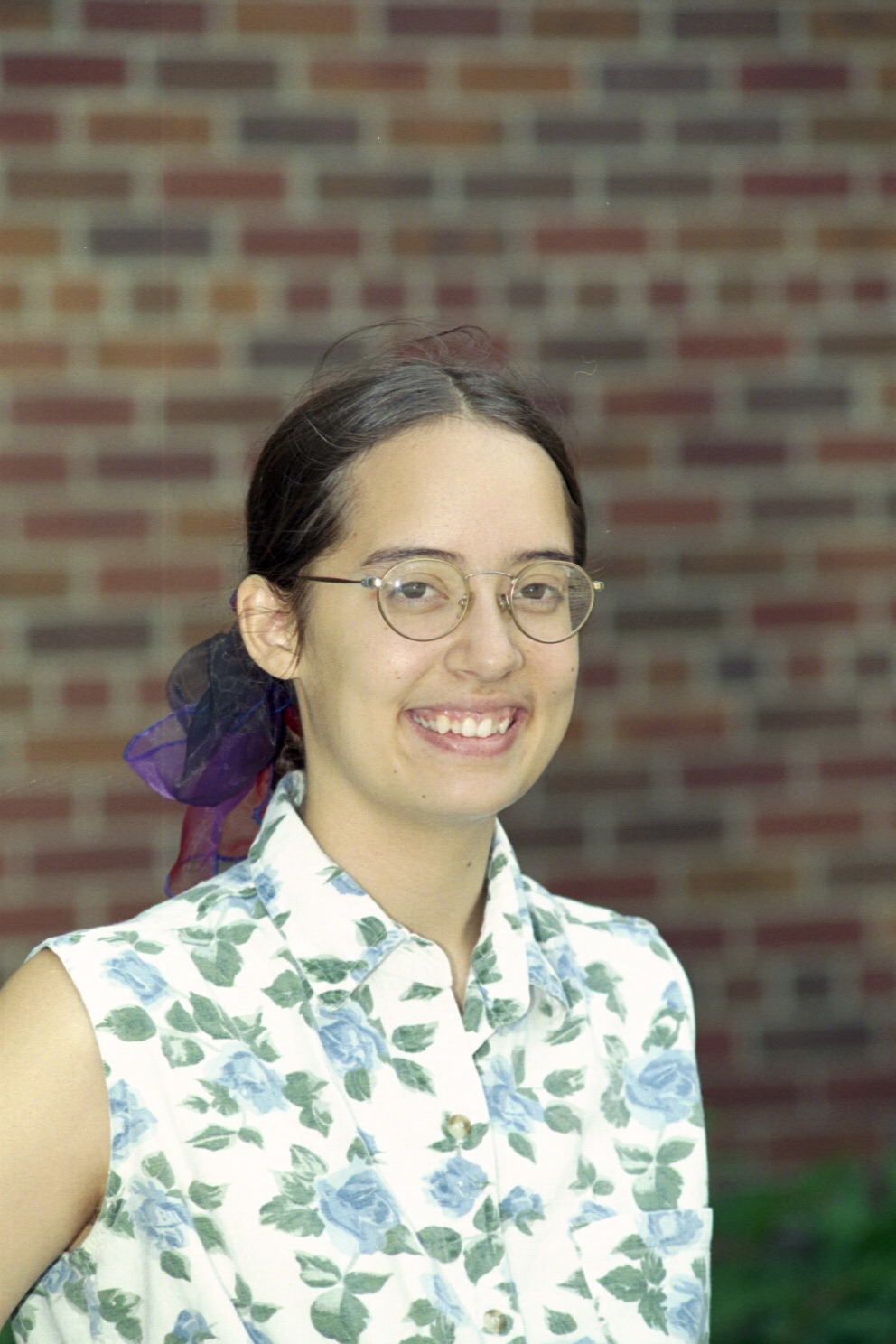
Home Institution: University of Minnesota
Major/Minor:
MRSEC Mentor: Dan Dahlberg
The Effect of Magnetic Fields on the Fractal Dimension of Aqueous Calcium Carbonate Crystals
The accumulation of calcium carbonate on the inside of water pipes is of concern to many people. We present a detailed study of this growth in aqueous solutions. Preliminary research indicates the fractal dimension of these crystals is affected by the application of a strong magnetic field, in the range of one kG. We are growing aqueous solutions of calcium carbonate in fields of up to four kG with in situ fractal analysis of their growth structure.
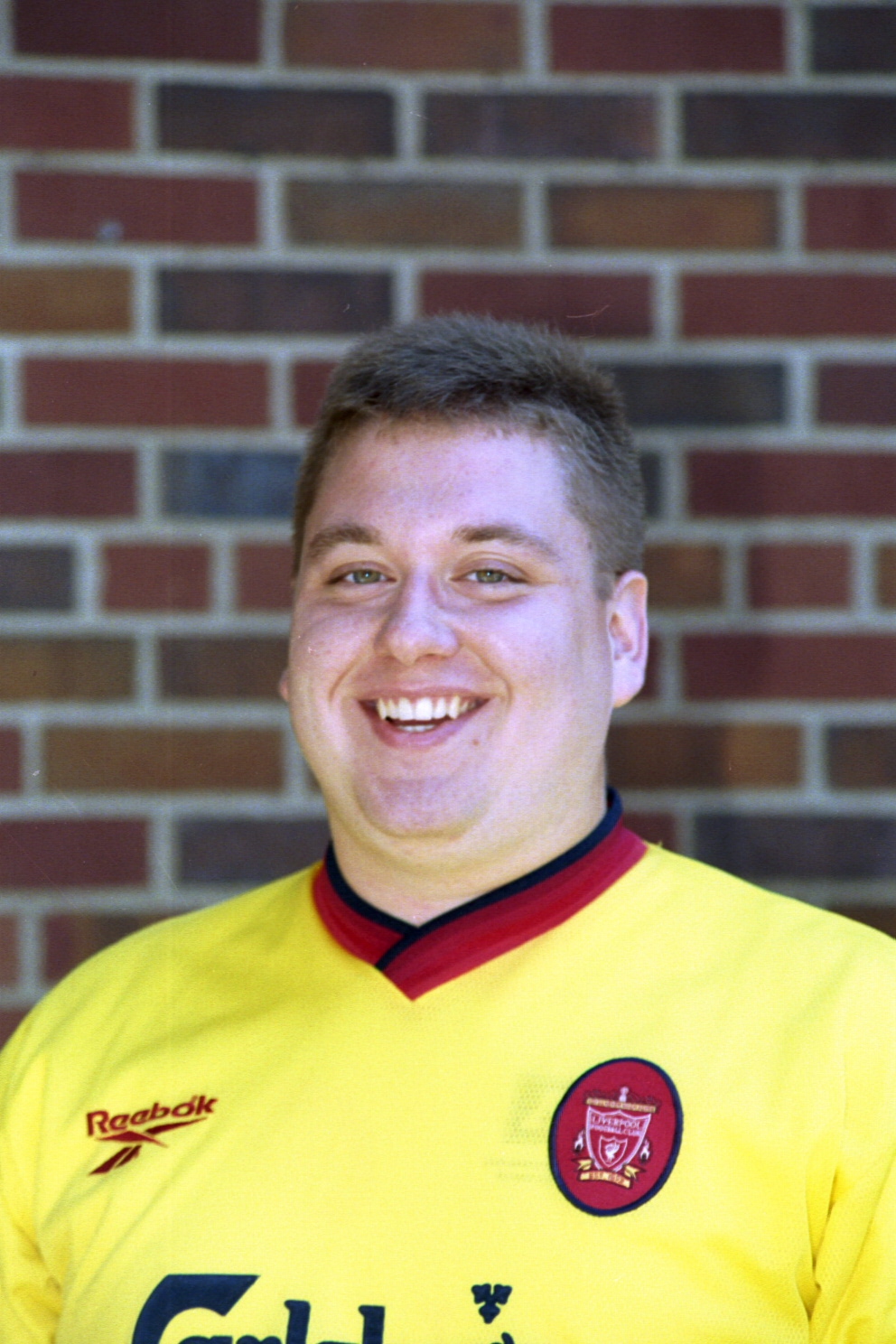
Home Institution: University of Minnesota
Major/Minor:
MRSEC Mentor: Michael D. Ward
Development of Polarization Modulation Corrected Surface Plasmon Resonance Analyzer
Three-dimensional organic crystals can be described as stacked layers of two- dimensional sheets. These two dimensional sheets can be used as models to design monolayer films on both a substrate and at an air-water interface. Our research focuses on the production of Langmuir-Blodgett (LB) films based on both trimesic acid derivatives and silver stearate complexes. Characterization of the monolayer films will include pressure-area isotherms, infrared spectroscopy, scanning probe microscopy, and surface plasmon resonance (SPR). Atomic Force Microscopy (AFM) and Scanning Tunneling Microscopy (STM) techniques will be used to image the monolayer and multilayer films. SPR will be utilized to provide information as to the height profiles of the deposited films, as well as identify boundaries within the LB films.
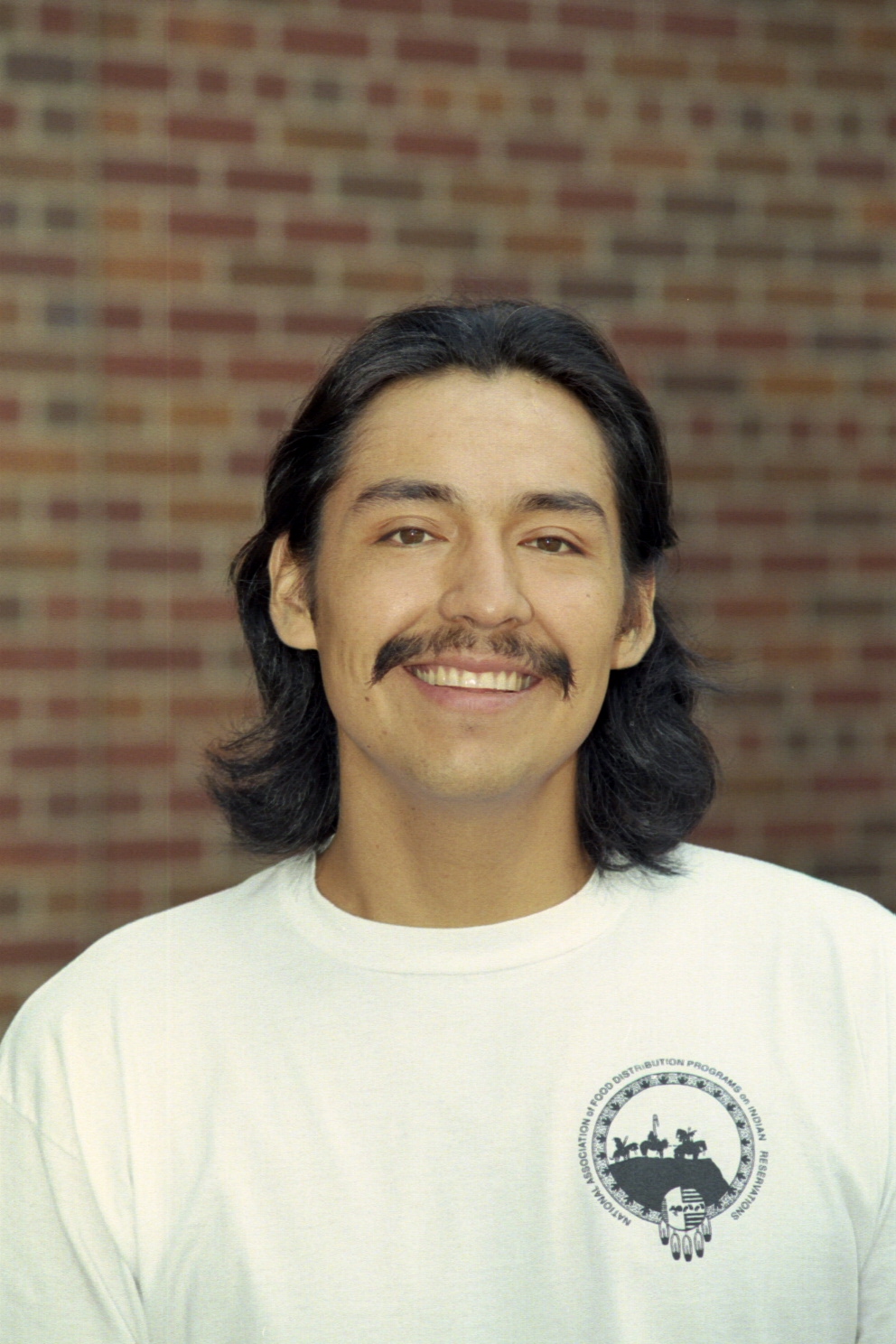

Home Institution: United Tribes Technical College
MRSEC Mentor: Mike Ward
Different Length Pillars on Host-Guest Interaction
The scope of our work is to investigate the effect of different length of pillars on host- guest interaction. Our host molecules will be guanidinium complexes of disulfostilbene and related compounds with more carbon-carbon double bonds between para-sulfonated phenyl rings. The geometry optimization of these compounds using CACHE revealed S-S distance of 12.347 A, 13.936 A and 16.512 A respectively for disulfostibene, disulfo derivative of trans,trans-diphynylbutadiene ( Two C-C double bond) and disulfo derivative with three C-C double bond. The disulfostilbene and related compounds will be prepared by methods found in the literature as in the attachment. The disulfo-derivatives will be reacted with guanidinium tetra- fluoroborate to obtain their corresponding guanidinium disulfo-complexes. The saturated solution of these complexes in methanol will be carefully added to different host solutions to grow the host-guest crystals. We will use mono- and di-substituted benzene as guest molecules. We have already prepared the crystals of guanidinium complexes of disulfostilbene with 1,4-divinylbenzene, p-xylene , 3,4-dimethylanisole and 3,5-dimethylanisole as guest. We will determine the crystal structure of these inclusion compounds by single-crystal x-ray crystallography.
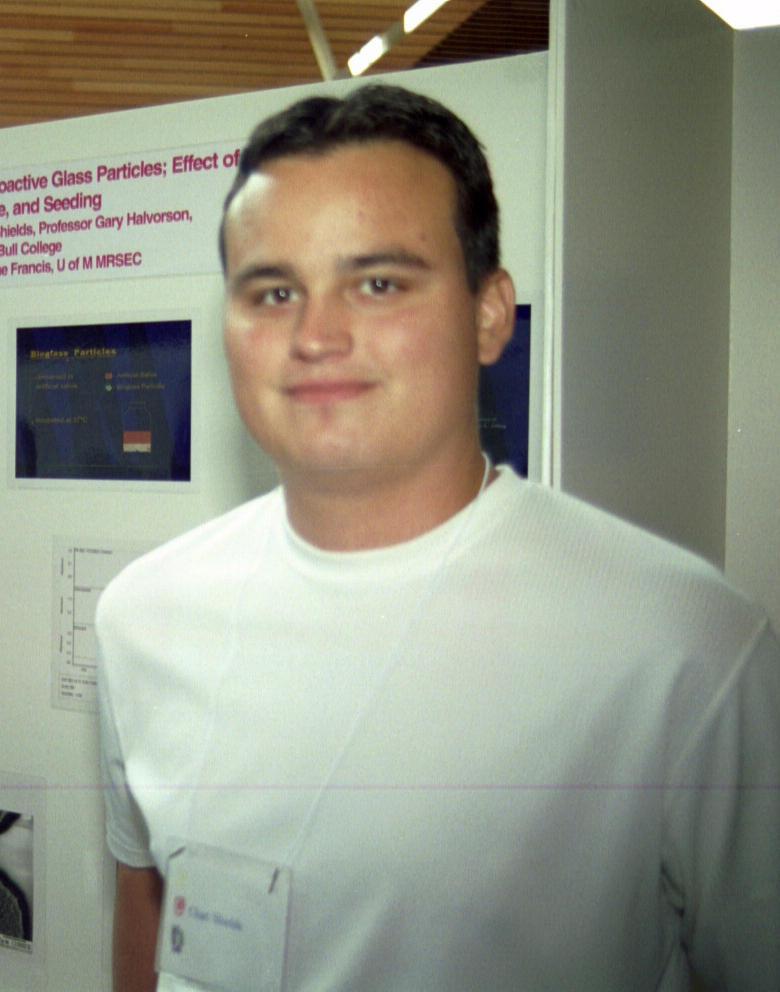
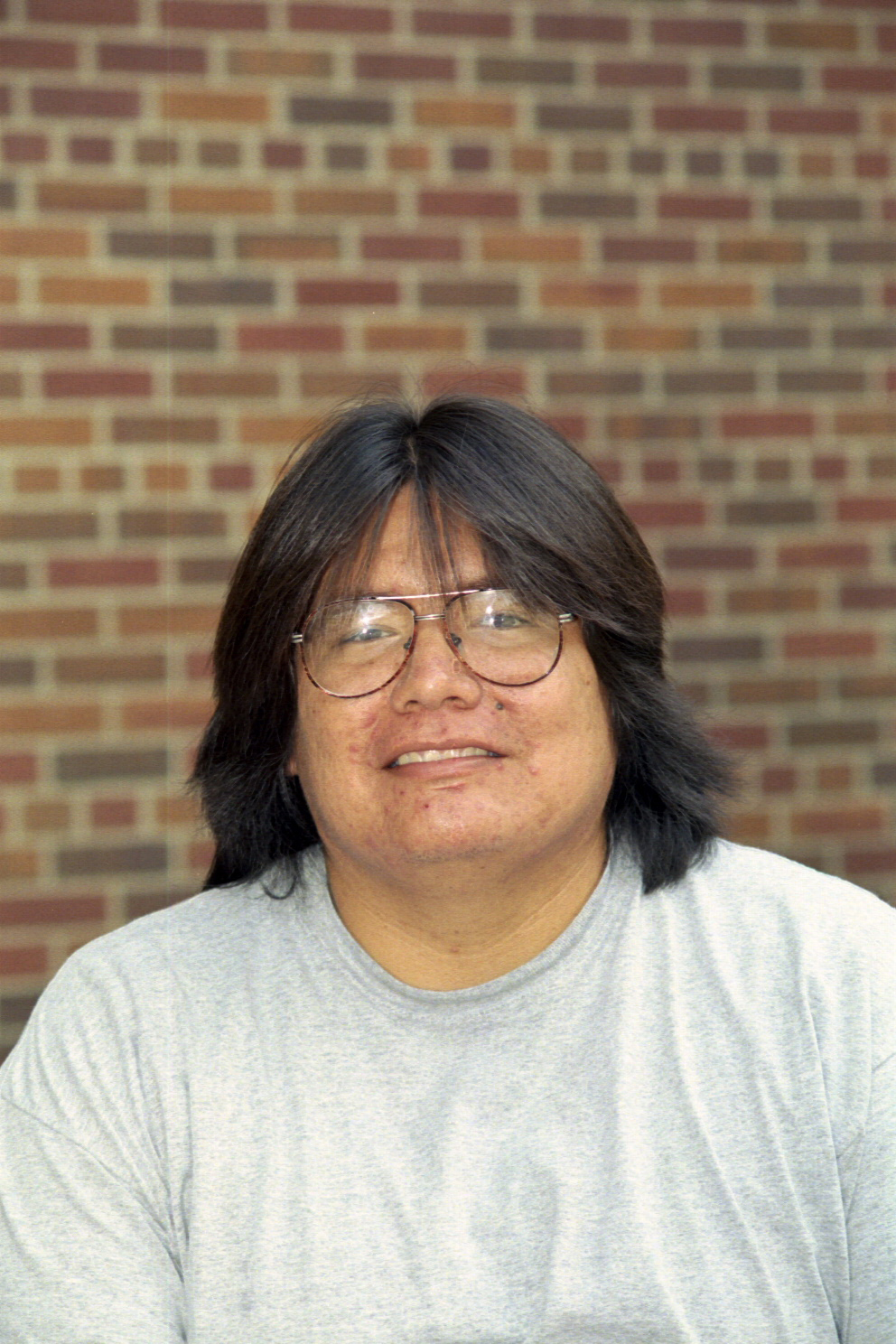
Home Institution: Sitting Bull College
MRSEC Mentor: Lorraine Francis
Different Length Pillars on Host-Guest Interaction
We conducted an earlier project studying the formation of interfacial bonds between hard connective tissues (specifically dentin) and bioactive glass for applications in dentistry. These bonds occur due to the formation of a layer of crystallized calcium phosphate known as hydoxyapatite. This layer forms at the interface when soaked in artificial saliva. Currently, we will be investigating this same area using different parameters. We will be studying the formation of hydroxyapatite on bioactive glass particles vs. bulk bioglass beads. We will also be studying the effects of different glass compositions and different pH levels of the artificial saliva solution, as well as attempting to identify which compounds appear at prior to the formation of hydroxyapatite crystals.
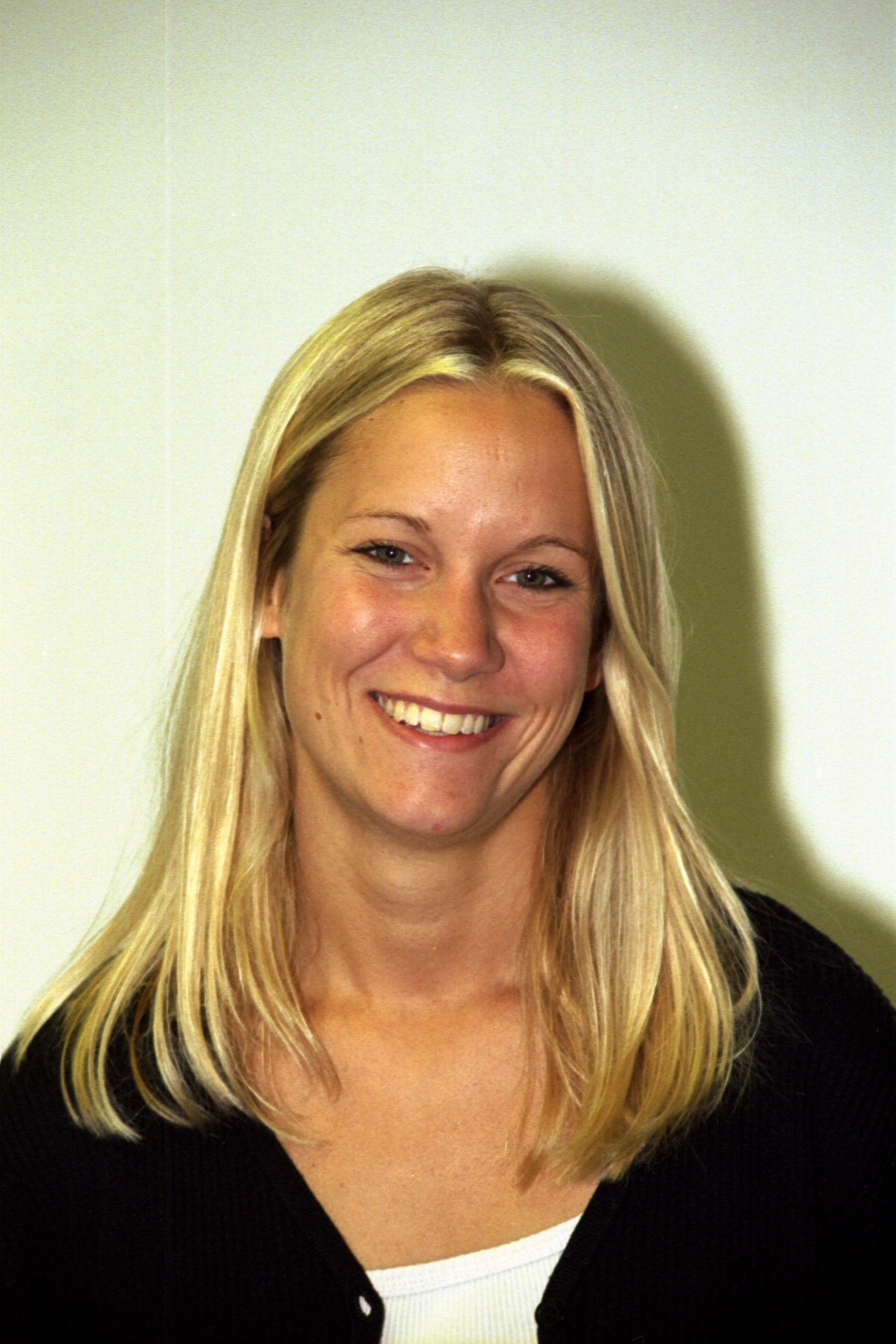

Home Institution: University of Wisconsin, Eau Claire
MRSEC Mentor: Chris Palmstrom
In-situ STM Studies of Metal/Semiconductor Interfaces
This study uses molecular beam epitaxy (MBE) to grow samples with GaAs/Sc1-xErxAs/GaAs heterostructures. The growth of Sc1-xErxAs on GaAs results in a layer by layer (Frank van der Merwe) growth mode, however, the growth of GaAs on Sc1-xErxAs tends to result in 3-D island growth (Volmer-Weber). Initial growth of GaAs on the Sc1-xErxAs layer exhibits layer by layer growth for coverages less than one monolayer. For coverages of GaAs in excess of one monolayer, the overlayer unwets the surface and exhibits 3-D island growth behavior. In situ scanning tunneling microscopy (STM) will be used to image the Sc1-xErxAs surface structure and the initial nucleation of GaAs on the Sc1-xErxAs surface. This will provide structural information about the preferred deposition sites and bonding at the interface. Additional GaAs growth and STM imaging will provide insight into the unwetting of the GaAs overlayer and the subsequent change from a layer by layer growth mode to a 3-D island growth mode.
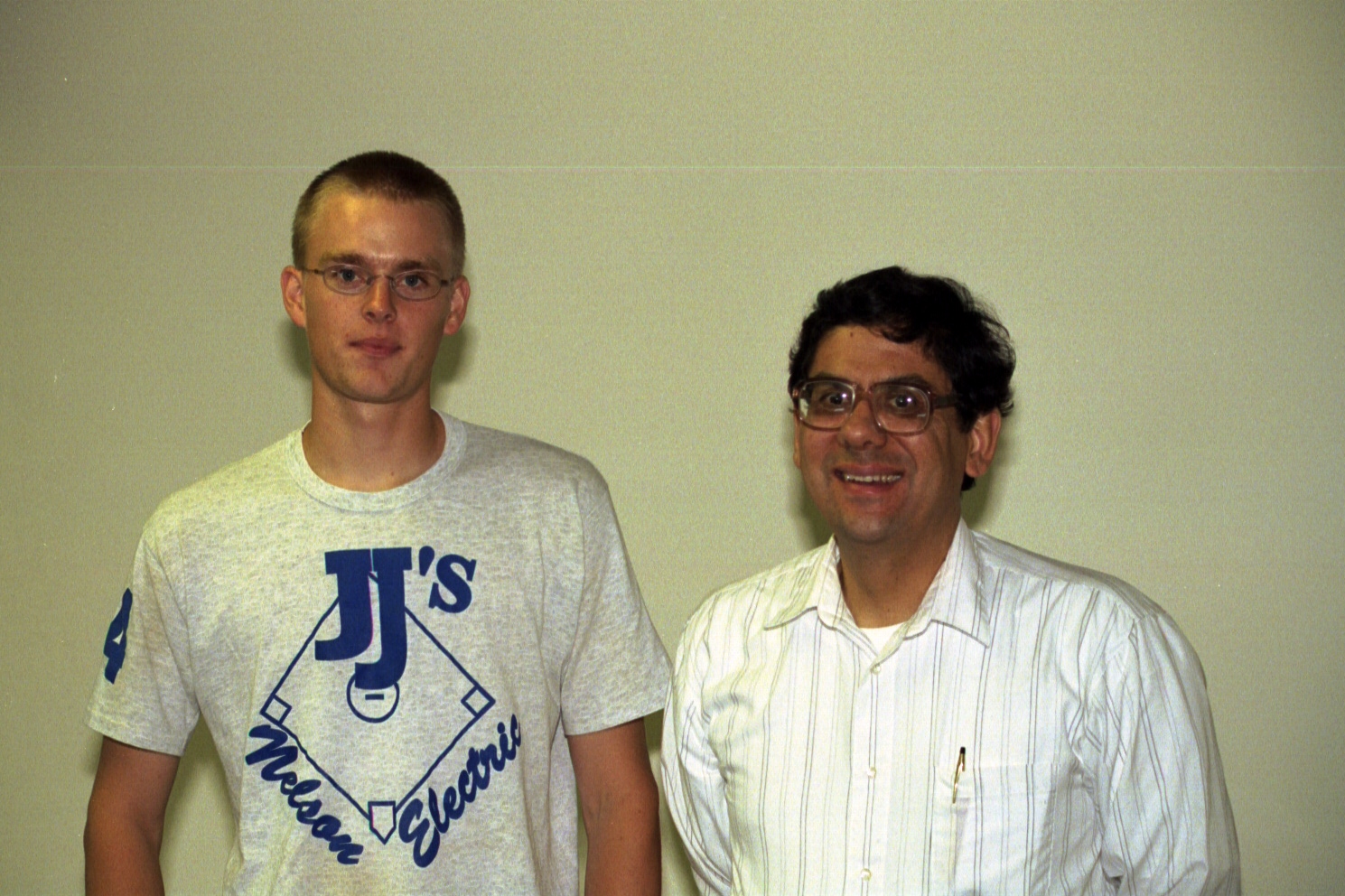
Home Institution: Northwestern College
MRSEC Mentor: Dan Dahlberg
Magnetic Susceptibility Studies
Interesting behavior is observed when a ferromagnetic material is coated with an antiferromagnetic material, and then cooled in an external magnetic field. Meiklejohn and Bean [1] observed that Cobalt particles prepared this way showed a preferential alignment of the sample magnetization along a single direction. This is called the Ferromagnetic/Antiferromagnetic Exchange Bias effect or the Exchange Anisotropy effect. This effect, if understood, may lead to improved magnetic sensors and memory devices. Magnetic susceptibility measures how easily a sample is affected by a magnetic field. In alternating current (AC) susceptibility measurements, a time-varying magnetic field, Hac, is used. The ac magnetic susceptibility of a sample is given by dM/dHac , where M is the magnetization (magnetic moment per unit volume) of the sample. When relatively small magnetic fields are used, susceptibility measurements are reversible (the sample is not changed from its original state by the measuring process). Magnetic susceptibility measurements [2] can be used to gain additional insight into the exchange bias effect. Last year, using funds provided by the MRSEC summer research program, an ac susceptometer was constructed. We propose to improve the capabilities of the device and use it to study the exchange bias effect in thin film samples of Co/CoO and other materials.
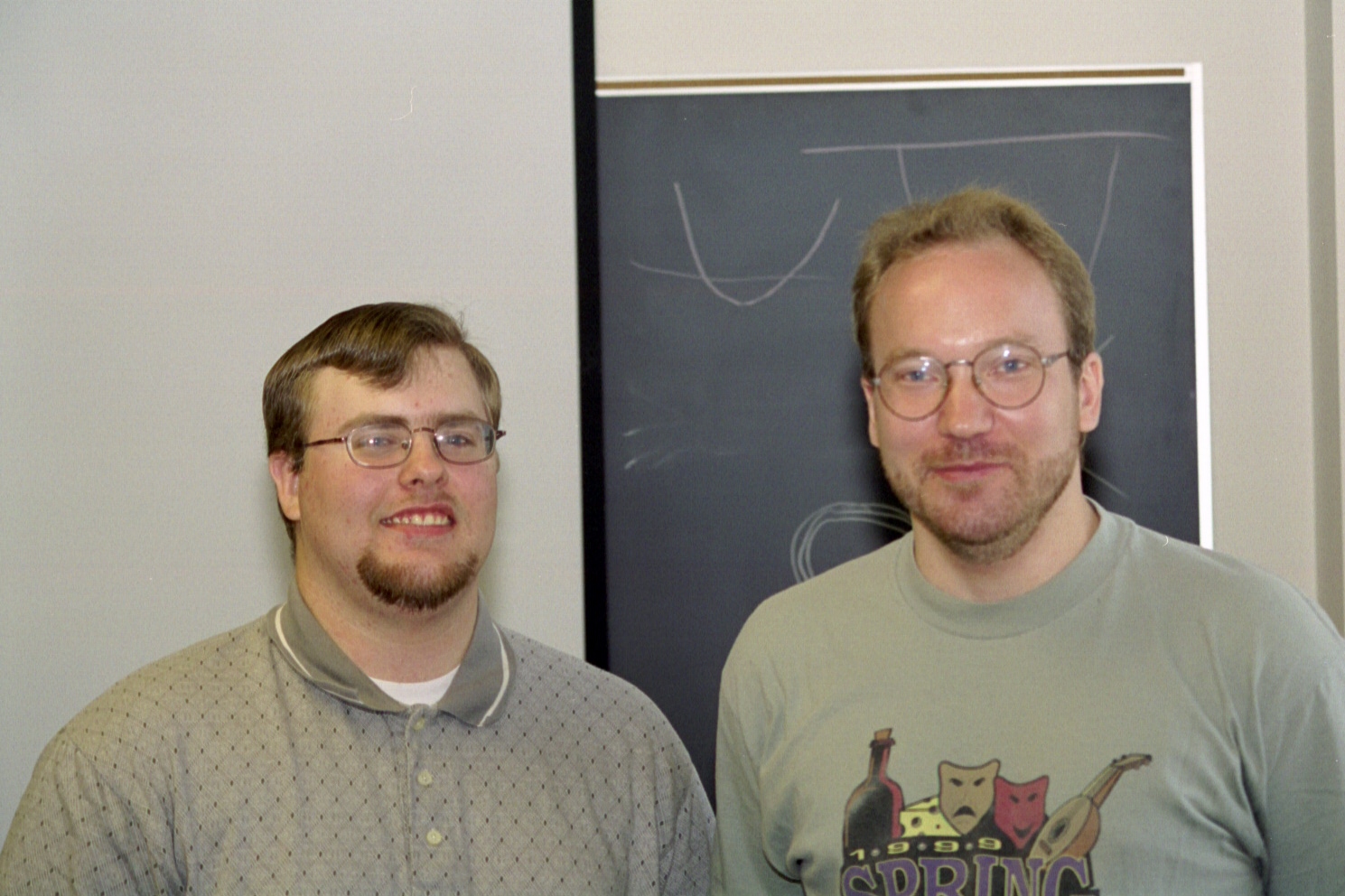
Home Institution: Augsburg College
MRSEC Mentor: Dan Dahlberg
Fe Magnetic Films on Mg0 (100) Substrates Matthew Klatt and Professor Ambrose Wolf, Augsburg College Professor Dan Dahlberg, U of M MRSEC
In the past, the coupling, or exchange bias, between thin ferromagnetic (FM) and antiferromagnetic (AFM) films, vital e.g. for magnetic RAM and magnetic sensors, has been investigated. However, recent studies using the anisotropical magnetoresistence (AMR) method have resulted in values substantially larger than those obtained with other techniques. This discrepancy will be studied on the simple systems Fe/FeO, Co/CoO, and Ni/NiO, where the oxide is the AFM layer, to gain a better understanding of the microscopic origin of the coupling. The samples will be prepared by sputtering the pure metal on MgO substrates of different orientations ((001), (110), (111)) and subsequent exposure to oxygen. The accurate exchange bias will be measured using AMR; vibration sample magnetometry measurements will recreate previous results. The dependence of the coupling on the crystalline structure (polycrystalline vs. single crystal) and orientation will also be studied, using X-ray diffraction, atomic force microscopy and He scattering.
UMN MRSEC
435 Amundson Hall, 421 Washington Ave. SE, Minneapolis, MN, 55455
P: 612-626-0713 | F: 612-626-7805